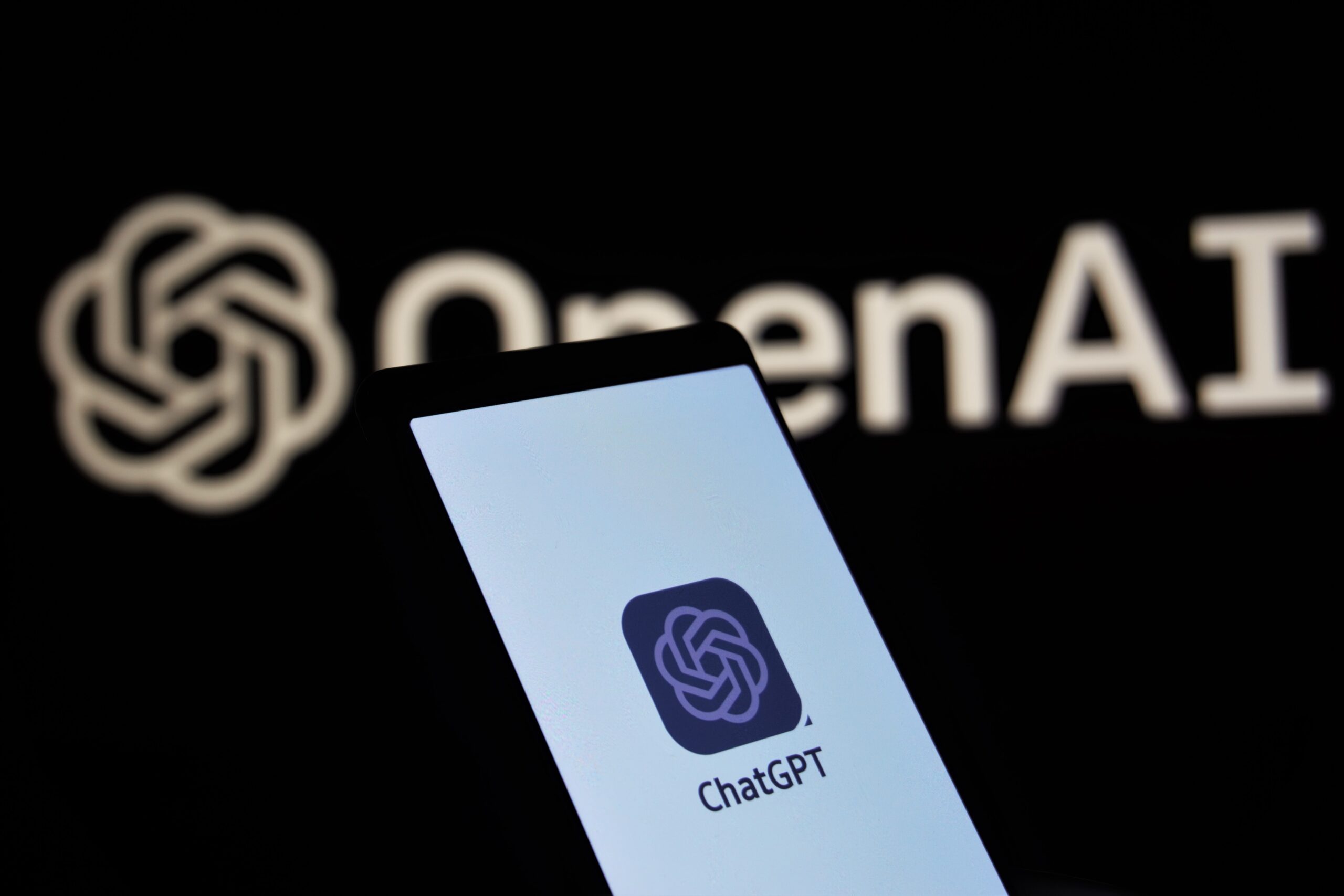As advances in artificial intelligence accelerate, the hunger for more data grows. With OpenAI’s release of Whisper and GPT models trained on internet data, ethical questions arise. Have the creators of these AIs crossed a line by tapping into YouTube’s massive vault of video content? Does transcribing over a million hours of YouTube videos and using it to train AI models demonstrate ingenious innovation or overreach? In this article, we’ll examine OpenAI’s use of YouTube data and what it means for the future of AI development. Weighing the benefits of large datasets against ethical considerations around consent and transparency enables us to draw informed conclusions.
OpenAI’s Massive YouTube Data Transcription
The Scale of the Data Set
- OpenAI has transcribed over a million hours of YouTube videos, amassing a vast data set for training its AI models. The sheer scale of this data set highlights the increasing importance of huge amounts of data for developing advanced AI systems. Using Whisper, OpenAI automatically transcribes the audio from these YouTube videos at a low cost, demonstrating how leveraging AI tools can generate data for further AI development.
Uses and Applications
- The potential uses and applications of OpenAI’s massive YouTube transcription data set are numerous. Using the data to improve speech recognition models, enhance natural language understanding, and generate more data through summarization. Analyzing such a large data set of natural human speech and conversations could yield insights into how people communicate in a range of contexts.
Limitations and Considerations
- However, there are also limitations and considerations regarding OpenAI’s YouTube data set to keep in mind. The data may reflect biases present on YouTube and contain offensive or toxic content, requiring filtering and moderation. Reliance on a single data source also risks developing AI systems that do not generalize well to other domains. Furthermore, using data without the explicit consent of the individuals in the videos raises privacy concerns, even if the data is not personally identifiable.
Overall, OpenAI’s huge YouTube transcription data set represents both an opportunity and a challenge. With proper considerations taken regarding ethics, bias, and privacy, this valuable data could be used to build innovative AI systems with a range of applications. However, sole dependence on any one data source risks developing AI that does not translate well beyond a limited domain. A diversity of high-quality data is key for the most advanced and broadly useful AI.
How OpenAI Is Using Whisper to Transcribe YouTube
Massive Datasets for Model Training
- OpenAI trained its natural language processing model Whisper on over a million hours of YouTube video transcriptions. Access to immense datasets is crucial for developing advanced AI systems. The sheer scale of data from platforms like YouTube provides opportunities for models to learn complex language patterns and world knowledge.
Challenges of Unstructured Data
- While large datasets are necessary for training powerful AI models, unstructured data from sources like YouTube requires extensive pre-processing. OpenAI developed techniques to align timestamps, detect speaker changes, and segment videos into coherent “utterances.” These utterances were then used to train Whisper, which can transcribe speech from various speakers with background noise.
Applications of Whisper
- The Whisper model shows how unstructured data can be harnessed to build useful AI tools. Beyond transcription, Whisper could enable searching within videos, automated video tagging, and other features. OpenAI may use Whisper to pre-train language models or for other research objectives.
Considerations Around Data Use
- Using public data resources for AI development raises important questions about data privacy, security, and ethics. OpenAI likely obtained user consent and followed platform policies in accessing and using YouTube data, but broader guidelines on responsible AI practices are still emerging. There are also concerns about potential model biases that could arise from imperfect or unrepresentative data.
Overall, OpenAI’s work with Whisper highlights both the opportunities and challenges of applying massive unstructured datasets to train advanced AI systems. With a responsible approach, data from sources like YouTube could help drive continued progress in natural language processing and beyond. But we must be mindful of the human values and societal implications involved with any technology.
The Scale and Scope of OpenAI’s YouTube Dataset
OpenAI’s transcription of over a million hours of YouTube videos represents an unprecedented volume of data utilized for AI training. The dataset, aptly named the “Whisper model”, provides a broad range of examples for the models to learn from. Covering a diverse range of topics, accents, and contexts, this colossal dataset exposes AI systems to the complexity and nuance of human language.
Massive Volume and Variety
- The scale of the data encompasses 1.7 million hours of video, amounting to over 200 million unique words. This enormous volume means the models have exposure to an extensive range of language and word usage. The variety of content, ranging from vlogs to lectures to documentaries, provides a multifaceted set of examples from which to learn. This combination of volume and variety is crucial for developing AI models that can comprehend and respond to the diversity of human language.
Continuous Learning
- With vast amounts of data comes the opportunity for continuous learning. As people upload new videos every day, the dataset is constantly expanding. OpenAI’s models can therefore repeatedly retrain on the ever-growing data, perpetually learning and improving. Exposure to such a large volume of new data on an ongoing basis allows the models to continue enhancing their understanding of language in a way that keeps up with how people communicate.
Broad Applicability
- The Whisper dataset is a valuable resource not just for OpenAI but for the broader AI community. With its huge scale and diversity, the data is useful for training a wide range of AI systems including not only language models but also speech recognition, visual recognition, and more. The dataset pushes the frontiers of what is possible for AI, providing a new level of data from which researchers everywhere can gain insights and make progress.
In summary, the Whisper model is groundbreaking in its volume, variety, and potential for constant improvement. It represents an enormously valuable resource for developing AI that can comprehend human language with all its complexity. OpenAI’s work in creating and utilizing this dataset highlights how vast amounts of data when made available for learning and progress, can drive AI to new levels of capability.
Controversy and Concerns Around OpenAI’s Use of YouTube Data

OpenAI’s use of YouTube data to train its AI models has sparked debate regarding data privacy and ethics. Their Whisper model transcribed over a million hours of YouTube videos, a data set that contains personally identifiable information and content that users did not consent to have analyzed.
Privacy Concerns
- YouTube’s terms of service do not explicitly prohibit the use of video data for AI training, but users do not expect their uploads to be used in this way. The scale of data collected also makes anonymization difficult, raising the possibility of individuals being identified from patterns in speech, background details, or other attributes. For users concerned about privacy, this unanticipated use of personal data could be seen as a violation of trust.
Bias and Toxic Content
- YouTube contains many types of problematic content that could negatively impact AI systems trained on its data. Hate speech, misinformation, and offensive language are prevalent on the platform, and models like Whisper may incorporate biases or toxicity from exposure to these videos. Although OpenAI conducts filtering to remove some unsuitable data, biases can still emerge in subtle ways. The company’s use of a poorly moderated platform like YouTube poses risks of amplifying real-world prejudices and discord.
Lack of Consent and Transparency
- Most YouTube users do not realize their uploads are being used to develop AI technology, nor have they explicitly agreed to allow their data and content to be utilized in this manner. While YouTube’s terms of service grant the company broad rights, users may feel exploited by the repurposing of data for unrelated commercial applications like improving AI systems. Greater transparency into how user data is collected and used could help address concerns, as would providing individuals more control over their information through tools like data portability and deletion requests.
OpenAI’s work pushes the boundaries of AI progress but also highlights the need for policies and oversight to guide the responsible development of advanced technologies. Their use of YouTube data raises critical questions around privacy, ethics, and consent that must be grappled with as AI continues its rapid advancement. Overall, this controversial practice serves as an important case study in ensuring AI progress aligns with human values and the well-being of individuals.
The Future of AI Training With Large Public Datasets
With access to over a million hours of YouTube data, OpenAI has a wealth of information at its disposal to improve its AI models. Transcribing and annotating this data allows the company to leverage real-world examples to teach its systems about language, speech, and more.
Continued Data Collection and Improvement
- OpenAI will continue collecting and annotating data from YouTube and other public data sources. As its systems get smarter, OpenAI can use them to identify and label more data, creating a virtuous cycle of improvement. With more data, models can learn complex patterns, understand nuance and context better, and become more robust.
Transfer Learning Applications
- The knowledge gained from YouTube data could transfer to other domains. For example, a model that learns speech transcription and language understanding from videos might adapt well to phone conversations. Transfer learning, where a model trains on one task and applies that learning to another, is an active area of research and holds promise for continued progress.
Privacy Considerations
- Using public data sources raises some privacy concerns. Even though YouTube videos are openly shared, individuals may not expect them to train AI systems. OpenAI must ensure that any personal or private information remains anonymized and unused. If sensitive data leaks into models, it could bias or endanger them. OpenAI has protocols in place, but as data sources grow, privacy is an ongoing consideration.
The Need for Diverse, Inclusive Data
- A risk of using a single data source like YouTube is that it may reflect certain biases or lack diversity. AI models can amplify the prejudices of their training data. OpenAI should combine YouTube data with other sources that represent more people and perspectives. Curating balanced, inclusive datasets helps build AI that serves all of humanity with empathy, respect, and care.
With responsible practices around privacy, ethics, and inclusiveness, the massive amounts of data on platforms like YouTube could help propel AI to new heights. OpenAI’s work signals an exciting future where AI learns from the real world, not just curated examples, and becomes more capable, helpful, and aligned with human values as a result. Overall, with large public datasets to tap into, the future of AI training looks very promising.
Keeping It Short
Looking ahead, you can expect innovations like OpenAI’s use of YouTube data to become more commonplace in AI development. As companies seek to train the most capable AI systems, leveraging massive public data sets will continue. However, increased access also demands increased responsibility. You as the user should stay informed on how your data is collected and used. While harnessing public information can benefit society, it requires diligent oversight to ensure ethics and privacy. As AI capabilities advance, maintaining transparency around data practices remains essential. Though exciting progress lies ahead, the path forward must be guided by core human values.
More Stories
KT Cloud Accelerates Digital Growth with New High-Tech Data Center in Yecheon-Gun
KT Cloud new data center in Yecheon-gun marks a key public-private effort with Gyeongsangbuk-do and Yecheon County.
Microsoft Cloud Momentum Fuels AI Growth Across Indonesia and Malaysia
Microsoft Cloud services expands strategically into Indonesia and Malaysia to reshape Southeast Asia’s technological landscape.
Roblox Farming Craze Fuels Surging App Store Economy
As you dive into the dynamic world of digital economies, one phenomenon stands out: the Roblox farming craze. This surge,...
NVIDIA Powers Up: Revolutionizing AI Data Centers with 800V HVDC Systems
NVIDIA emerges as a pioneer, revolutionizing the backbone of AI data centers through its cutting-edge 800V high-voltage direct current (HVDC) systems.
Confluent Unifies Real-Time and Historical Data to Power Next-Gen AI and Analytics
Confluent has made major progress by upgrading its Confluent Cloud platform. These enhancements aim to unify data streams for advanced AI applications.
Lloyds Banking Group Appoints Aritra Chakravarty to Lead Agentic AI Initiatives
Lloyds Banking Group has announced the appointment of Aritra Chakravarty as the Head of Agentic AI, effective June 2, 2025. This strategic decision positions Lloyds at the cutting edge of integrating sophisticated AI technologies into its operational framework.


